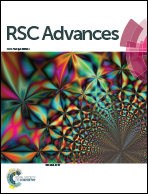New Securinega alkaloids with anti-HIV activity from Flueggea virosa†
Abstract
Chemical fractionation of the ethanolic extract of Flueggea virosa yielded a group of Securinega alkaloids including flueggenines E (1) and F (2) as novel hybrid structures, flueggenines G–I (3–5) as new dimers and fluevirosines E–H (6–9) as new trimers, along with six known biosynthetically related compounds. The diverse structures of these isolates were characterized via comprehensive spectroscopic analyses and comparison with literature data. Compounds 1 and 2 are rare Securinega alkaloid hybrids incorporating tryptamine and piperidine residues, respectively, while 3 represents the first example bearing a securinine-type monomeric unit among Securinega alkaloid dimers. An in vitro anti-HIV screening of all available alkaloids revealed weak to moderate activities for over half of these isolates with EC50 values ranging from 7.8 to 122 μM. Among the tested compounds, the known dimer flueggenine D exhibited the best activity with an EC50 of 7.8 ± 0.8 μM.


 Please wait while we load your content...
Please wait while we load your content...